Oh The Barbican – one of the most iconic (and I don’t use that word lightly) housing estates in the world. One that inspires love and hatred in equal measure. I have friends who dream of retiring to a flat within its Brutalist concrete walls while others dislike it with an intensity bordering on passion. I’m imagining no less of a polar reaction from you all so I thought it would be interesting to have a look around this flat which is on the first floor of the Shakespeare Tower and has three bedrooms. It is on with The Modern House for £1,550,000.
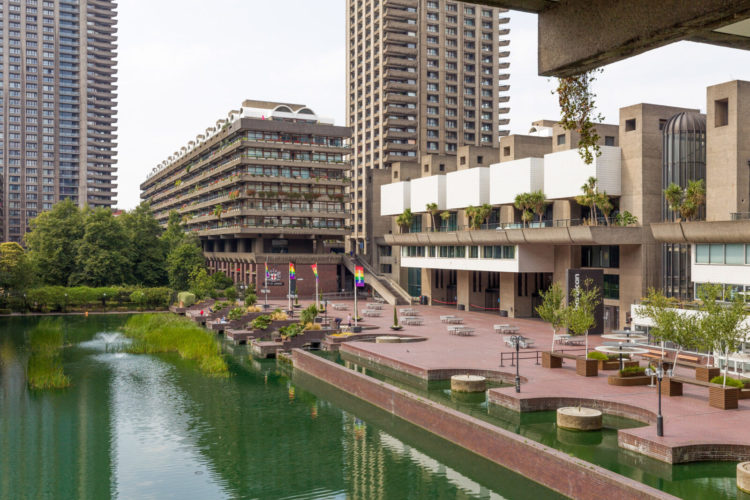
The Barbican divides its flats into types and this is an 8A, which refers to its location within the estate and means that it has three bedrooms and a breakfast room; types 8B and C have dining rooms, which are larger.
In 1951 the City of London ran a competition for architects to submit plans for a scheme to replace buildings destroyed by a night of bombing in December 1940. The proposal was to be called the Golden Lane Estate. Peter Chamberlin, Geoffrey Powell and Christoph Bon all submitted plans and agreed that if one of them won, they would form a partnership and work together. Powell won and Chamberlin, Powell & Bon was formed in 1952. After the Golden Lane Estate, the firm was asked to design the Barbican Estate.
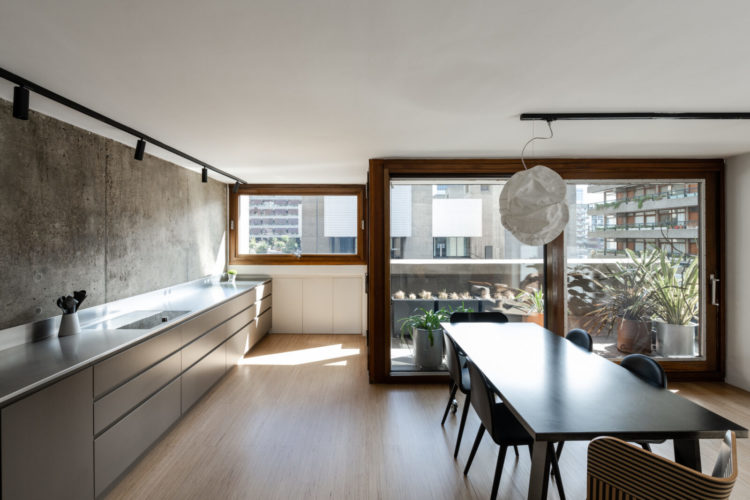
As I said Brutalist architecture arouses passion and fury in equal measure. Of all the styles of housing in London, none is more polarising. The style – characterised by angular forms and rough materials (glass, brick, concrete) – flourished from the mid-1950s to the 1970s as the capital began to rebuild after the second world war. Concrete was functional and affordable, which made it ideal for government buildings, shopping centres, and crucially, new housing stock.
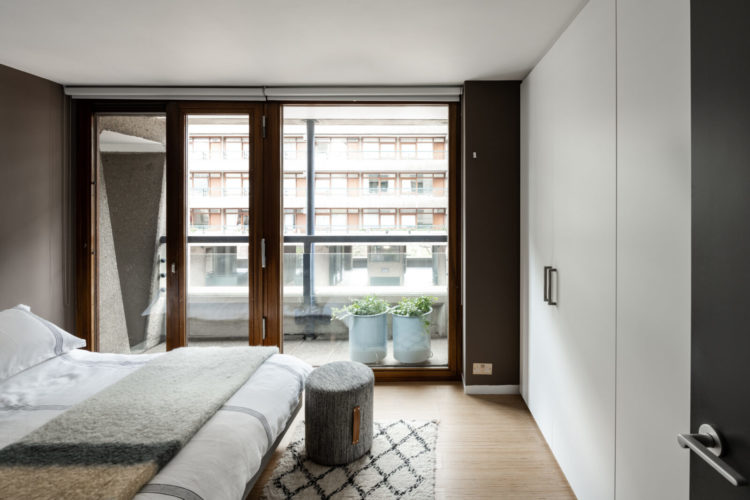
The architects behind the movement believed they were creating a new utopia. And yet, some 50 years later, Prince Charles apparently spoke for many when he said at a London Planning and Communication Committee dinner in 1987: “You have to give this much to the Luftwaffe. When it knocked down our buildings, it didn’t replace them with anything more offensive than rubble.”
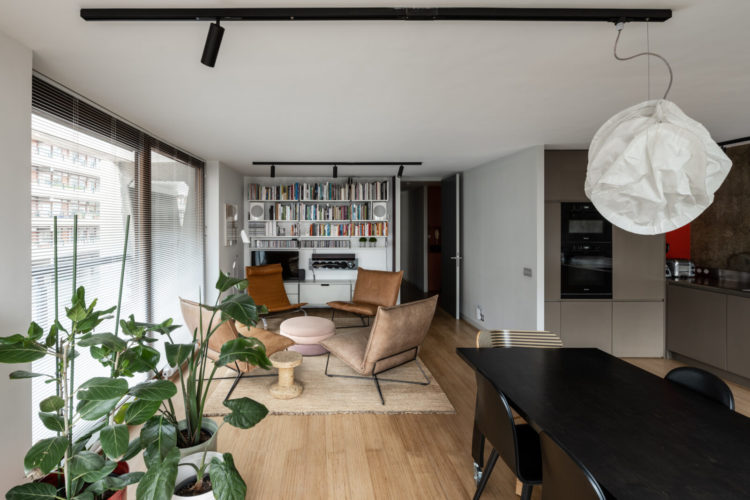
And yet brutalism has its fans, many of whom would say that to understand its beauty, you must look at it in context. Jonathan Foyle, chief executive of the World Monuments Fund Britain, told me in a piece I wrote for The Financial Times nine years ago, that brutalism is a civic-spirited form of architecture.
“It is damned by its name which comes from the French, béton brut, or raw concrete, but we use the same word [Brut] to describe Champagne and this perhaps sums up the dichotomy at the heart of this style.
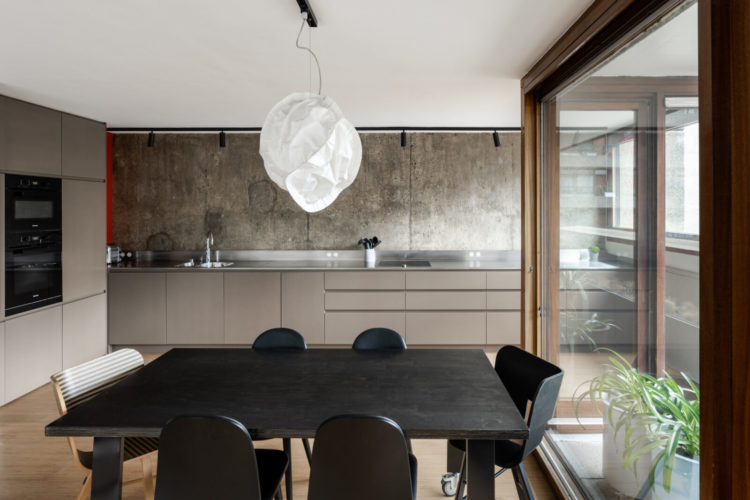
“Brutalism must be taken in context; after the war, a lot of housing was needed in a hurry, but it was designed with the best of intentions. It’s a very optimistic style.”
One of the key features of the brutalist housing estate is the elevated walkways or “streets in the sky”, connecting apartment blocks: in theory, a place where neighbours could convene while their children played safely away from traffic. In practice, a dimly lit no-man’s land, which often led to a feeling of fear among residents.
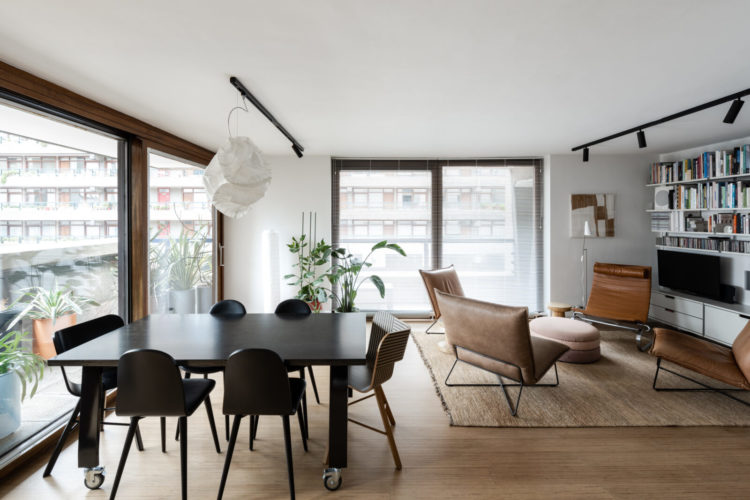
These flats, which aren’t huge, are well thought out though and, with its walkways and gardens some compare it to living on a university campus. This one, is light and airy (although given the setting you might always be conscious of the proximity of neighbours outside the windows).
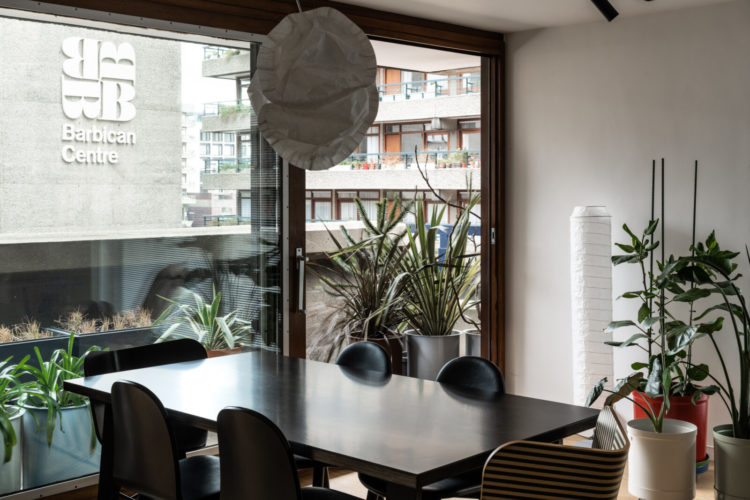
The raw concrete of the building has been brought inside and refined with a polished backsplash in the kitchen while the industrial feel continues in the stainless steel worktop. I have had stainless steel worktops and they are by far and away the most practical. If concrete isn’t for you then you can soften the look of the steel with wooden cabinets and coloured tiles so don’t assume you have to go for the full Brutalist look.
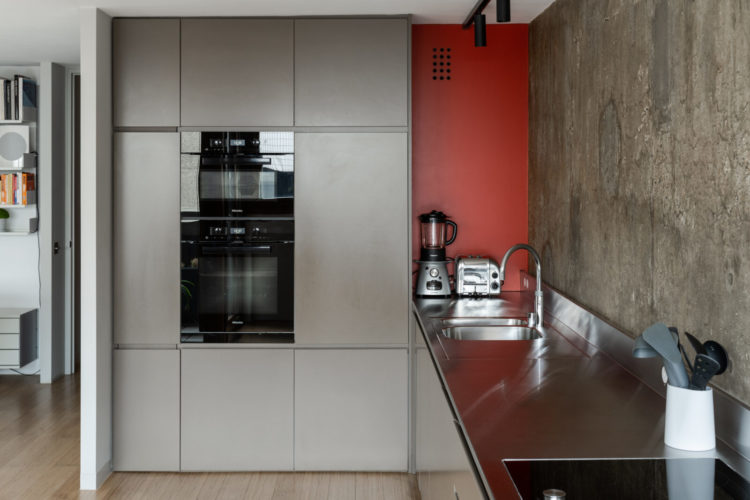
Elsewhere the vendors have steered away from the classic white walled look so common to this style and created a dark navy sitting room with vibrant yellow velvet chairs in a sculptural shape which works well in this context. Adding plants and worn leather furniture also makes the spaces feel more cosy although I already know that those who like it love it and those who don’t haven’t changed their minds.
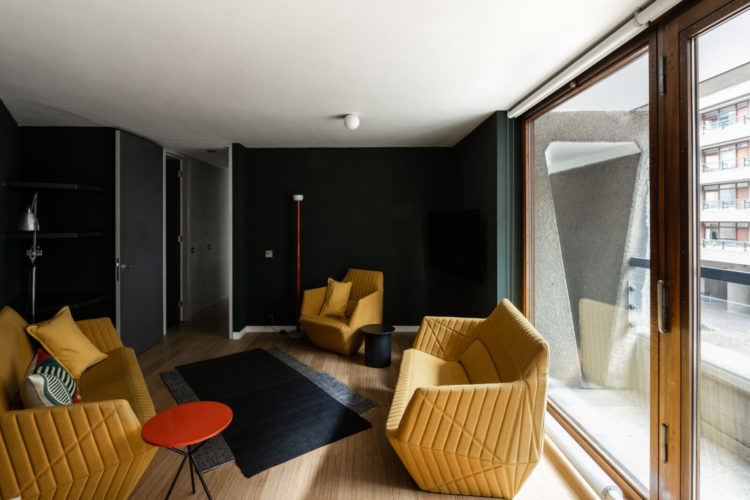
So where do you stand on Brutalism? With Prince Charles or with those who planned a new utopia?





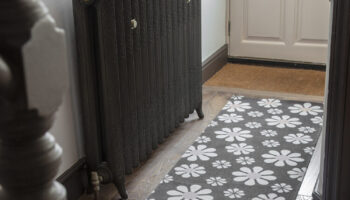
I’ve seen some lovely homes inside the Barbican, notably this one. https://www.vitsoe.com/us/voice/songs
Personally, I find them quite livable, as light seems to be a key design element.
As a young child in the ’70s in Quebec, I was endlessly fascinated by Habitat 67, https://www.habitat67.com/en/
Here is a peak inside one of the units: https://houseandhome.com/video/modern-montreal-loft/
Those who criticize the Barbican for low ceilings will see that the issue was handled quite differently in Habitat, which uses stacked pre-fab concrete units.
I think the units are gorgeous — not sure about the relation to the ground though, which is for me of great importance.
I really appreciate the architecture, design, and materials. The sense of place both inside and out is impressive. It’s iconic and if it’s era. I find myself very drawn to, and torn by the style.
I do find a lot to like about Brutalism and the idea behind it. You can make the inside your own so easily. Like any neighborhood, I like a huge mix of architectural styles, not just one. That’s too boring and matchy- matchy. While an entire neighborhood of Brutalism may be too stark, I also don’t want to see an entire neighborhood of traditional. Just my little opinion here in Atlanta/USA
I guess that one person can have several dream homes. I think this style would be one of those. I would need like six more homes personally but as a London city retreat this would be lovely. I would like higher ceilings though. But perhaps I can have that in my Paris dream apartment…
I do really like the inside of the flats. I overall find Brutalist architecture so interesting. I have part of me that LOVES it, and I find it so interesting and I try to visit examples when I can. Especially in eastern Europe, but then there is also part of me that HATES it and probably wouldn’t live in a building with one. It’s pretty interesting there in London as I tend to associate it with other cities. Thanks for sharing.
I too love Brutalist architecture and am lucky that I own a flat in one of these estates up in the NE of England and work in Eastern Europe so I get to travel around and see lots of examples of Brutalism. The downside is that my English flat is in an estate which is full of design and building issues with lots of issues esp crumbling walls and leaking pipes. It is costing a lot of money to repair and upgrade.
I love Brutalist architecture and would happily live in this complex, perhaps because I came of age in the 70’s.
If only I had 1.5 mil!
Oh dearie me no no no …concrete box …but you will be proud of me Kate ……I spy with my little eye the red thread.
Even the brightly coloured furnishings and the address are not convincing enough. The low ceilings and the all too open windows impose both a feeling of heaviness and of being under the lens of a microscope at the same time. Although a minimalist, not warmed by concrete.
Eek, I become claustrophobic just thinking about looking out at the honeycomb. And what’s with that deflated white thing on the ceiling? No, not for me…
I love the Barbican, and this just shows what can be achieved with a lot of maintenance and care (and money) which is not often available to the many estates of this type around the UK.
I have always dreamt of living in the Barbican. It helps that it has an amazing art centre, gardens etc. I suppose it’s the facilities and location as well as the architecture that appeals. I currently live in a small Victorian terrace and hanker after views and sky!
It’s very popular here right now among the minimalists. Since clutter makes me uneasy and confused I would thrive in this clean, no nonsense environment. Cheers from Canada!
I love it!
Absolutely gorgeous. I was at a college that won an architectural award from the concrete society though so brutalism always reminds me of my youth.
I love it and love the Barbican. I work opposite and look at it all day and walk along the walkways whenever I can.
with Charles!
I always thought that the Barbican looked as if someone had tried to “pretty up” East Berlin. However, I am very much in love with the mustard furniture in this particuar flat and think that this room could be really fantastic with one or two large pieces of modern art.
I love everything about this flat! This is my retirement dream!